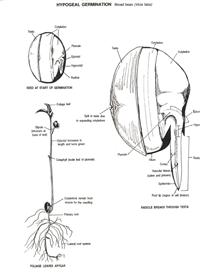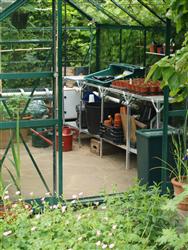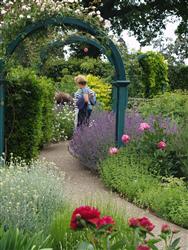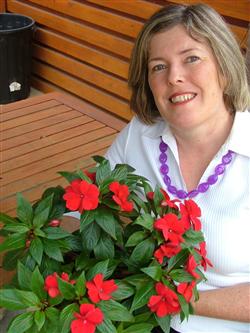 Propagating Plants can be easier when you know how.
Propagating Plants can be easier when you know how.
- Develop your broad skills in plant propagation.
- Learn what methods to use, to propagate what plants.
COURSE STRUCTURE
The course is divided into ten lessons as follows:
There are 10 lessons in this course:
- Introduction to Propagation
- Asexual and sexual propagation
- Aseptic Micropropagation, Runners, Suckers, Layering, Separation, Division, Grafting, Budding, Cuttings, Seed
- Genotype versus Phenotype
- Plant life cycles -phases of the sexual cycle; phases of the asexual cycle
- Annual, Perennial, Biennial Life Cycles
- Propagation Terminology
- Nursery production systems
- Operational Flow Chart for Seed Propagation
- Seed Propagation
- Seed Sources
- Maintaining Genetic Identity of Seed -Isolation, Rogueing, Testing, Hand Pollination
- Hybrid Seed Production
- Storing Seed
- Types of Seed Storage
- Seed Biology -Endospermic, Non Endospermic
- Dormancy Factors Affecting Germination
- Germination Treatments -boiling water, stratification
 Terminology
Terminology
- Seed Raising Technique
- Potting Media
- Characteristics of Potting and Propagating Media
- Media derived from rock or stone
- Media derived from synthetics
- Organic Media
- Soil Media
- The UC System
- Chemical Characteristics -eg. pH, Cation Exchange Capacity, Salinity, Conductivity
- Laboratory Testing of Media
- Physical Characteristics
- Potting Mixes
- Propagating Media
- Nutrition at the Propagation Stage
- Nutrition Management and Fertiliser Application
- Vegetative Propagation I
- Reasons to propagate by cuttings
- Types -softwood, hardwood, semi hardwood, herbaceous
- Stem Cuttings, Tip, heel, nodal, basal
- Leaf and Leaf-bud cuttings
- Cane cuttings
- Root Cuttings
- Bulb Cuttings
- Hormone Treatments for Cutting Propagation
- Other Cutting Treatments; basal wounding, anti-transpirants, fungacides, disinfectants, mycorrhyza, etc
- Artificial Light for Propagation
- Cutting Propasgation Efficiency
- Rockwool Propagation
- Vegetative Propagation II
- Care of stock plants
- Layering
- Division
- Terminology
- Managing Watering
- Vegetative Propagation III
- Terminology
- Budding and grafting
- Reasons for Grafting
- How a Graft forms
- Grafting Techniques; Types of Grafts
- What Plant to Graft on What
- Grafting Materials
- Root Grafting, Bench Grafting, Soft Tissue Grafting
- Establishing Rootstocks
- Tissue culture: Applications, Problems, Nutrient Media, Cleanliness, Growing
 Conditions
Conditions
- Tissue Culture Procedures and Techniques
- Laboratory Requirements
- Terminology
- Biotech applications in Horticulture
- Propagation Structures and Materials
- Growing in a Greenhouse
- Growing Structures: Types of Greenhouses, Cold Frames, Shadehouses
- Propagating equipment -Heaters, Bottom Heat, Misting, Light Control, Benches etc
- Managing a Greenhouse
- Risk Management
- Nursery hygiene
- Risk assessment and management
- Safety -tools, equipment handling, electricity, etc
- Pest and Disease Management
- Environmental Problems and management
- Nursery Management I
- Plant modification techniques
- Management policies
- Keeping Propagation Records
- Nursery Production Systems
- Nursery Management II
- Nursery standards, cost efficiencies, site planning and development
Duration: 100 hours
AIMS
Develop the ability to source information on plant propagation, through an awareness of industry terminology and information sources.
Plan the propagation of different plant species from seeds, using different seed propagation methods.
Plan the propagation of different types of plants from cuttings, using different cutting propagation methods.
Plan the propagation of various types of plants using a range of propagation techniques, excluding cuttings and seed.
Determine the necessary facilities, including materials and equipment, required for propagation of different types of plants.
Determine a procedure to minimise plant losses during propagation.
Determine the management practices of significance to the commercial viability of a propagation nursery.
Design a propagation plan for the production of a plant.
WHAT YOU WILL DO IN THIS COURSE
Here are some examples of what you may do:
- Test soils to determine characteristics which would be valuable to management of any given soil in a horticultural situation
- Identify sandy loam, silty loam, and clay loam soils by feel; and pH testing by soil indicator; and relate to plant selection
- Identify and sow a range of different types of seeds, in different situations, in a way that will optimise successful propagation.
- Propagate a range of plants using different vegetative propagation techniques
- Pot up and provide after care for a range of propagated seedlings and cuttings.
- Plant a range of (different types) plant material.
- Maintain the desired growth type and habit for a range of plants.
- Identify significant woody plants including: Trees; Shrubs; Groundcover; & Conifers
- Identify a range of significant plant problems including pests, diseases and others.
- Identify a range of non woody and indoor plants of horticultural significance.
- Conduct a risk assessment of a horticultural workplace to determine safe working practices and select appropriate personal safety clothing and equipment.
PROPAGATION TIP
Preventing pests and diseases in the propagation area
It doesn’t matter if you are a backyard propagator, or working as a propagator in a full scale production nursery, good hygiene and prevention are generally the best ways to reduce the occurrence of pests and diseases during propagation.
Pests and diseases can spread many different ways including:
• Dipping healthy cuttings in hormone or water in which diseased material has been dipped.
• Through irrigation (eg. from contaminated water sources) or rain water (dripping off structures or diseased plants, or by splashing up soil).
• Soil-borne diseases on the hose if it's dropped on the ground.
• Soil on the bottom of pots/trays.
• On tools, clothes, shoes and workers hands.
• Contaminated soil mixes or pots.
• Infected plant material.
Some ways to help reduce pest and disease problems while propagating plants, include:
• Using sterilised propagation and potting media. These can be purchased from some garden nurseries and garden supplies, or specialist potting mix companies. Alternatively if you can’t obtain sterilised mixes, then use media made from soilless components, such as peat moss, and coarse washed river sand.
• Increasing the spacing between plants can increase ventilation, reducing the likelihood of diseases occurring and spreading.
• Segregate clean and treated pots. Never store clean pots on the ground. Clean all used containers before reuse removing as much media and plant debris as possible. Ideally they should then be dipped in a sterilant (eg. Bleach or ammonia or ammonia solutions).
• Use good quality plant material for propagation (vigorous growth, free of obvious pest and disease problems).
• Disinfect material used for cutting propagation before using in a 2% sodium hypochlorite solution (bleach) for one minute then rinsed the plant material in clean disinfected water to remove the bleach.
• Take cuttings from the top of plants - this is the cleanest part.
• Clean any tools thoroughly before using, and ideally between working on different plants. Dip cutting tools in a disinfectant such as methylated spirits or a 5% bleach solution.
• Place clean plant material only on cleaned/sterilised benches.
• Don't handle soil or plants unless hands have been washed with hot water and soap, or a suitable disinfectant such as Savlon or Dettol, or use disposable gloves.
• Avoid splashing water near sterilised soil, pots, benches, etc.
• Pots should always be placed on well drained surfaces (preferably concrete, screenings or raised benches.
• Hang hoses on a hook...don't lie them on the ground, particularly nozzles.
• Place any plants which you suspect to be diseased in an isolated area.
• Apply control methods to pests and diseases as soon as they are detected to prevent their spread.
MEET SOME OF OUR EXPERT FACULTY
The ACS tutors and subject matter experts have many years experience within the horticulture industry.
|
|
|
|
John L. Mason Dip.Hort.Sc., Sup'n Cert., FIOH, FPLA, MAIH, MACHPER, MASA
Mr Mason has worked in horticulture since 1971 when he graduated from Australia's leading Horticultural College -Burnley. He has worked extensively around the world, in both Victoria and Queensland (Australia) and the UK. Former nurseryman, landscaper, parks director and horticultural consultant. Editor of 5 gardening magazines, author of more than 70 books, including 'Trees and Shrubs for Small Gardens' and 'Orchids: A beginners Guide'. John
started teaching in the early 1970's.
|
Dr Lynette Morgan B.Hort.Tech(Hons), PhD in hydroponic greenhouse production
Partner in SUNTEC International Hydroponic Consultants, Lynette is involved in many aspects of production horticulture production, including remote and on site consultancy services for new and existing commercial greenhouse growers worldwide as well as research trials and product development for manufacturers of hydroponic products. Lynette is also the author of 6 hydroponic technical books
|
Bob James QDAH. B. Applied Sc(Hort Tech),Grad Dip. Mgt, M;Sc (Enviro Sc.), PDC.
Bob has over 50 years experience in Government and Private Horticulture and Environmental Management Consulting.
His work is diverse across most branches of horticulture including nurseries, landscaping, horticultural education, environmental assessment, land rehabilitation; and more.
|
 |
 |
|
Diana Cole B.A. (Hons), Higher Dip. (Garden Design), RHS Advanced Cert. Horticulture, Cert Admin.Mgt., Dip. Inst. Personnel Management
In addition to her RHS horticulture, garden design, City & Guild construction, NPTC pesticide/legislation and business/management qualifications, Diana has a variety of skills drawn from setting up Arbella Gardens, a landscape gardening business. She also has administrative, management and training delivery experience drawn from her employment in other organisations such as the NHS and other educational institutions such as schools & universities. She has augmented her training expertise having gained the Preparing to Teach in the Life Long Learning Sector qualification. She also has experience gained through working as a volunteer in a number of different roles including amenity style gardening in parks and practical conservation work.
|
Rosemary Davies Dip Hort Sc. Originally from Melbourne, Rosemary trained in Horticultural Applied Science at Burnley, a campus of Melbourne University. Initially she worked with Agriculture Victoria as an extension officer, taught horticulture students, worked on radio with ABC radio (clocking up over 24 years as a presenter of garden talkback programs, initially the only woman presenter on gardening in Victoria) and she simultaneously developed a career as a writer. She then studied Education and Training, teaching TAFE apprentices and developing curriculum for TAFE, before taking up an offer as a full time columnist with the Herald and Weekly Times and its magazine department after a number of years as columnist with the Age. She has worked for a number of companies in writing and publications, PR community education and management and has led several tours to Europe. In 1999 Rosemary was BPW Bendigo Business Woman of the Year and is one of the founders and the Patron, of the Friends of the Bendigo Botanic gardens. She has completed her 6th book this year and is working on concepts for several others.
|